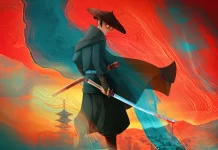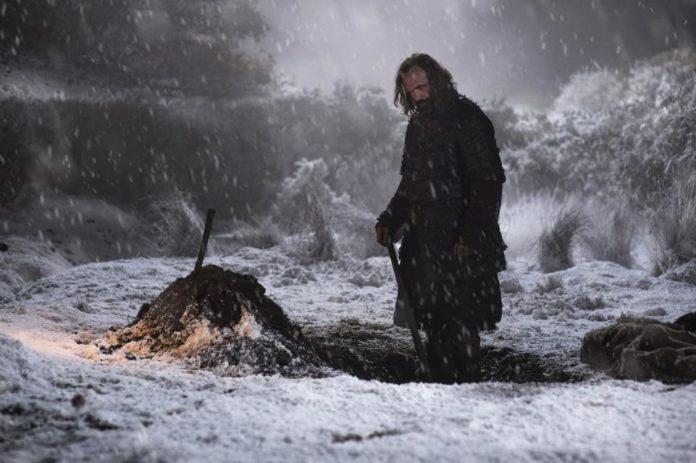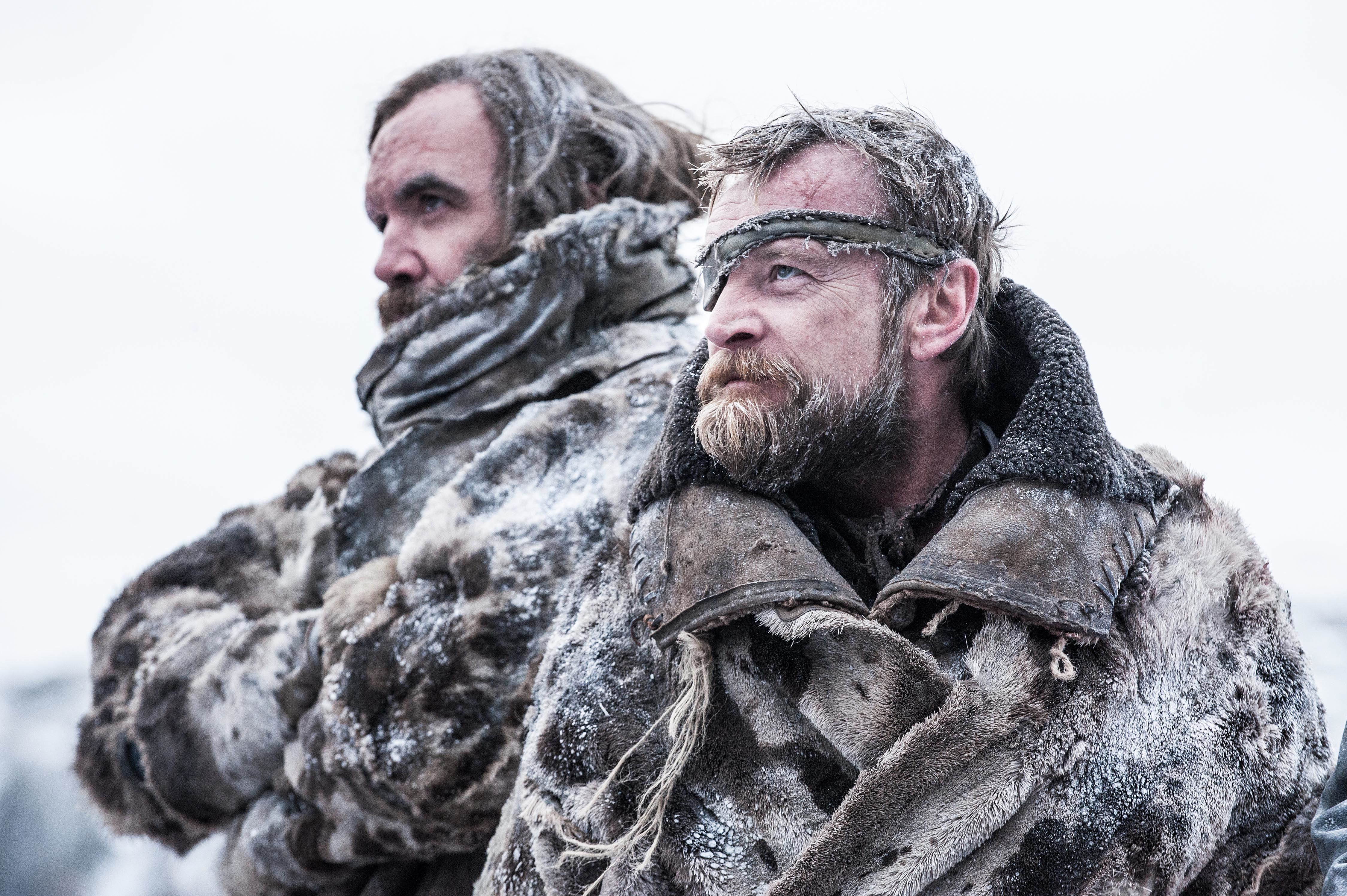It’s difficult to adapt material from text to screen, whether it’s being done for film or TV. By and large, Game of Thrones has been successful at adapting the foundation of the Song of Ice and Fire novels for television, even if the plot of the show has broken with the books in notable ways.
The characters, the heart of the story, have made the transition with much of their complexity intact, and are still being developed even this late in the game. Take the Hound, for example. As I wrote for Watchers on the Wall, Sandor Clegane is someone who has undergone significant transformation, with more potentially still to come. He’s developed a lot as a character, going from a rough, barbaric type in the early seasons to someone who serves a higher purpose and who lives by a more clear-cut code. Along the way, he’s earned our enduring sympathy.
Let’s review the Hound’s journey on the show first. When we meet him, he’s Joffrey Baratheon’s brutish bodyguard — he brutally rides down Arya Stark’s friend Mycah, making him seem like a stone-cold killer. But there are hints that he’s capable of tenderness. He’s sympathetic to Sansa when Joffrey takes her to look at her father’s head, for example, and later rescues her from a mob in King’s Landing. “Well done, Clegane,” Tyrion tells him. “I didn’t do it for you,” the Hound growls back.
Later, he kidnaps Arya, intending to ransom her back to her relatives. During their journey together, he demonstrates his brutishness by leaving a wounded farmer and his daughter for dead, much to the dismay of Arya, who calls him “the worst shit in the Seven Kingdoms” and subsequently leaves the Hound for dead following his bout with Brienne of Tarth. It isn’t until we see the Hound reemerge in season 6 that we see the softer, more driven side of his character really assert itself.
On the page, the Hound’s hidden depths are hinted at a little more often, making him more sympathetic sooner. While his initial introduction is as intimidating as it is on TV, the layers start to peel back after the Hand’s Tourney in King’s Landing, when the Hound escorts Sansa back to her quarters. Sansa, afraid of this violent man with his burned face but determined to be courteous, compliments his riding, and calls him “Ser.” the Hound snarls back at her.
Spare me your empty little compliments, girl… and your ser’s. I am no knight. I spit on them and their vows.
The Hound also tells Ser Loras Tyrell that he is “no ser” after he fights his brother Gregor during the same tourney, saving Loras from what was likely to be a grisly death. (We do get that moment on the show.) There’s also a bit from A Clash of Kings where the Hound is again escorting Sansa back to her quarters. Ser Boros Blunt, a member of the Kingsguard, addresses the Hound as “Ser,” and isn’t even done with his question before the Hound rushes in to correct him:
Fuck your ser, Boros. You’re the knight, not me. I’m the king’s dog, remember?
As short as these lines are, they reveal a lot about how the Hound views himself. There’s an element of self-deprecation here, almost of shame. While he’s not a man ravaged by regret — after all, his ability with violence has helped him stay alive — he goes out of his way on multiple occasions to deny any sort of nobility or title. He sees knights as brutes who masquerade as noble, and while he can’t claim to be any less brutal than them, his standards are high enough that he refuses to take part in their hypocrisy.
Using another example from the books, the Hound shows off his hidden soft side again when Joffrey, having just ordered Sansa’s father decapitated, comes to collect her from her chambers. The Hound may be working for a monster, but he does what he can to spare Sansa the worst of that monster’s wrath.
Sandor Clegane scooped her up around the waist and lifted her off the featherbed as she
struggled feebly. Her blanket fell to the floor. Underneath she had only a thin bedgown to cover her nakedness. “Do as you’re bid, child,” Clegane said. “Dress.” He pushed her toward her wardrobe, almost gently.
And later, after Joffrey has Ser Meryn Trant hit Sansa for daring to tell him what she thinks of him:
Ser Meryn and Ser Arys followed him out, but Sandor Clegane lingered long enough to yank
her roughly to her feet. “Save yourself some pain, girl, and give him what he wants.”
Then there’s the moment after the Hound saves Sansa from the mob in A Clash of Kings/”The Old Gods and the New”:
Sandor Clegane cantered briskly through the gates astride Sansa‟s chestnut courser. The girl was seated behind, both arms tight around the Hound‟s chest. Tyrion called to her. “Are you hurt, Lady Sansa?” Blood was trickling down Sansa‟s brow from a deep gash on her scalp. “They . . . they were throwing things . . . rocks and filth, eggs . . . I tried to tell them, I had no bread to give them. A man tried to pull me from the saddle. The Hound killed him, I think … his arm . . .” Her eyes widened and she put a hand over her mouth. “He cut off his arm.” Clegane lifted her to the ground. His white cloak was torn and stained, and blood seeped through a jagged tear in his left sleeve. “The little bird’s bleeding. Someone take her back to her cage and see to that cut.”
The Hound’s treatment of Sansa seems to go beyond an obligation to protect Joffrey’s intended; the Hound consistently demonstrates warmth and concern for her, even if it’s masked by an aggressive facade. Seeing the Hound’s “almost gentle” demeanor come to the fore under these brutal conditions goes a long way toward garnering sympathy for an otherwise barbarous character.
The Hound further endears himself to us during his trip with Arya, where he opens up about how, as a boy, his older brother Gregor shoved his face into a fire. In this brutal event, we can see one of the key reasons for the Hound’s later brutality; he’s both a perpetrator and a victim of it. It doesn’t excuse what he’s done, but understanding breeds sympathy. His transformation continues when, after Arya leaves him following his fight with Brienne, he drags himself back from the brink of death with the help of new friends, determined to carve out a new role for himself in the world, a role that isn’t tainted by violence and hypocrisy.
When we leave him in season 7, he’s well on his way to achieving this goal. He still uses violence, but he’s now using it to fulfill a bigger purpose: protecting humanity from the dead. He’s found a role that he doesn’t have to have distain for, and is working toward some measure of redemption for his past sins. The breadth of the Hound’s change — from murderer-for-hire to a warrior fighting for the preservation of all human life — engenders even more sympathy. We’ve seen him come so far, and want him to make it to the finish line.
To stay up to date on everything Game of Thrones, follow our all-encompassing Facebook page and sign up for our exclusive newsletter.
Watch Game of Thrones for FREE with a no-risk, 7-day free trial of Amazon Channel



















![[Book Review] The Blade Itself (The First Law Trilogy) by Joe Abercrombie](https://bendthekneegot.com/wp-content/uploads/2018/01/1516047103_maxresdefault-218x150.jpg)



















